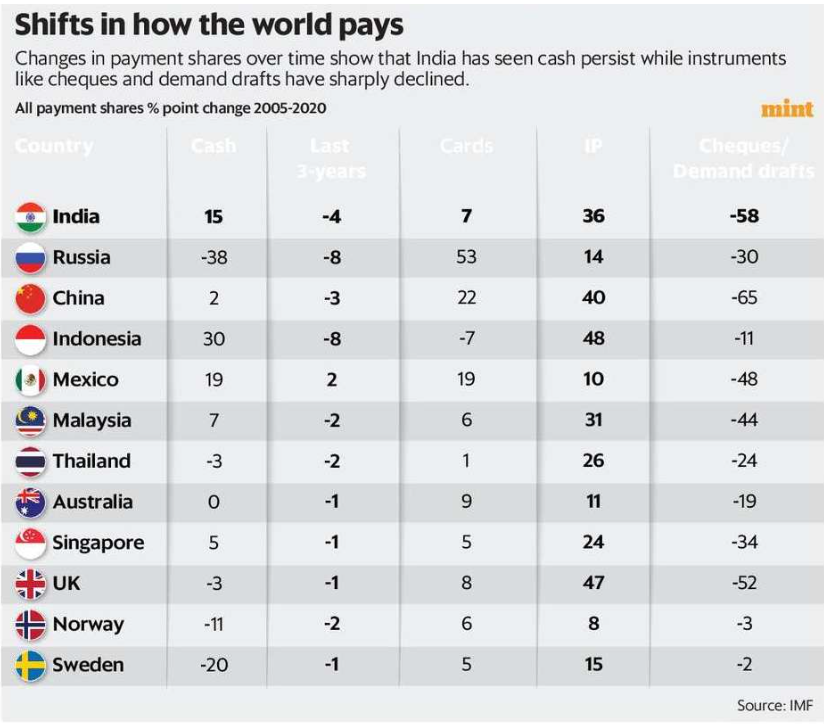ForumIAS announcing GS Foundation Program for UPSC CSE 2025-26 from 27th May. Click Here for more information.
Contents
Source: The post is based on the article “Our experiment with an e-rupee will yield demand-side learnings” published in the Livemint on 14th November 2022.
Syllabus: GS – 3 – Money market.
Relevance: About India’s digital rupee.
News: Central banks across the world have begun experimenting with various forms of digital money. The Reserve Bank of India (RBI) has also launched two variants of a digital rupee on an experimental basis. One for wholesale transactions between banks and another for retail transactions within the private sector.
About India’s digital rupee
| Read here: RBI unveils features of digital rupee, plans to launch pilot soon |
How India’s digital rupee is unique?
India decided to launch two different variants such as the wholesale variant and the retail variant.
Wholesale variant: It operates through the accounts that commercial banks have with the Indian central bank.
Retail variant: It is based on a two-tier system—individuals and firms can hold it only through the banking system.
Some unique features include a) India’s digital rupee is based on the idea of tokens, b) RBI will issue the digital rupee but banks will distribute it to the private sector like fiat currency.
Why does India have two different variants?
Does not try to alter the current monetary system: At present only banks have accounts with RBI while the rest of the economy operates through the commercial banking system. India followed the same approach with the digital rupee also.
Digital rupee does not pay any interest to its holder: Digital rupee is a substitute for cash rather than a substitute for bank deposits.
The challenges with interest-paying CBDC held directly with the RBI are 1) It will create challenges for bank deposits. Thus, it will create financial stability risks, 2) It will complicate the conduct of monetary policy as individuals move money between their accounts with commercial banks and the central bank, leading to fluctuations in the monetary base.
| Must read: Digital Rupee: Advantages and Challenges – Explained, pointwise |
What is the demand for the Indian rupee at present?

A recent research paper by economists at the International Monetary Fund shows that a) The use of cash as a mode of payment has actually grown in India between 2005 and 2020, b) The use of instant payment options such as NEFT and IMPS has increased, c) The use of cheques and demand drafts has dropped sharply.
Overall, the government wants to reduce the use of cash in the economy.
Will the digital rupee reduce the demand for cash in the economy?
CBDC is focused on money as a medium of exchange rather than a store of value. Hence, it has to compete with the UPI ecosystem which is already ubiquitous in most parts of the country to reduce the demand for cash in the economy.




